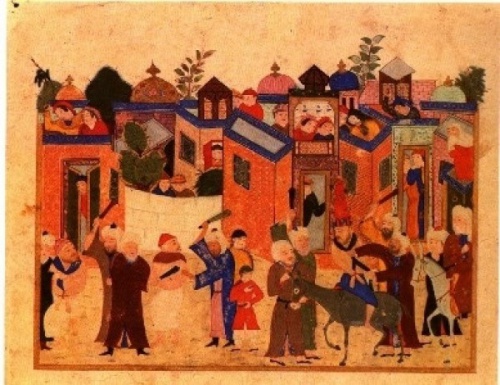Nowadays, history has consolidated its position in the world of human science. Historical studies are not just informative, but they are reliable frameworks through which the roadmaps of other sciences are drawn. Hence, it is necessary for researchers to modify the current structures and methodologies of history and keep them in pace with other sciences.
Interdisciplinary studies provide researchers with a new understanding of history. By applying interdisciplinary principles, we can develop the boundaries of history and turn it into a more theoretical and applied science.
The contents of historical books are mostly organized chronologically or spatially. Considering interdisciplinary studies, how are historical eras redefined? What is the significance of the Iran's medieval times?
In one sense, the theme of history is the narrative of events modified by generations. To apply history, we have to analyze events whose roots are perceivable by going back through chains of circumstances. Thus, by studying Iranian medieval history, which connects ancient and contemporary periods, we can gain a deeper understanding of current issues. However, many critical issues of the Iranian medieval time have been left unstudied. Our historical knowledge of Iran includes a remote memory of splendid ancient times (330 BC- 651 AD), Arab conquests of Iran (1254-1272), the magnitude of the Safavid dynasty (1501-1722) and the decline of the Qajar dynasty (1794- 1924) and afterward. It seems that medieval times is forgotten in the crowd of successive invasions.
The website explores various aspects of the Iranian medieval times through interdisciplinary approaches. These studies include the era of the Arab invasions of Iran to the rise of the Qajar dynasty. They are divided into 6 parts regarding interdisciplinary studies, including 1. Social history, 2. Historiography, 3. Historical geography, 4. Literature, 5. Art and architecture and 5. History of science. Studies of each part are classified into three categories: books, articles, and interviews.
Iranian medieval history website is in English and Persian. All studies including photos, maps, and contexts are based on reliable resources. In this regard, all studies that contribute to our current understanding of Iranian medieval times are welcome.[1]
Maryam Kamali
[1]. Painting: Genre Scene (Public punishment of three miscreants), from the Sarai Albums, Tabriz, the second half of 15th century, Hazine 2153, folio 99b in


I’m so happy that I received your encouraging comment. I’m so glad that this website is helpful to you, dear professor, and your students. Please let us know if you have any suggestions. It is with very great pleasure if we have your scholarly works on the website. Thank you so much for your great attention.
With best regards